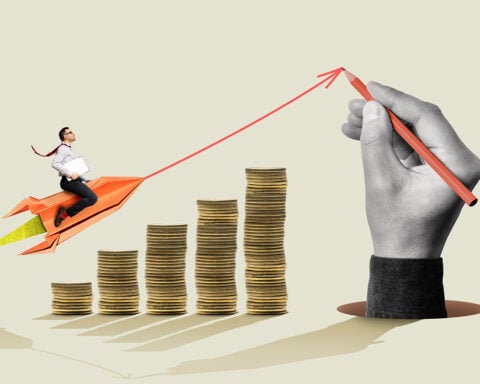Despite looming recession concerns, interest rate increases, a dip in spending, and a housing market squeeze, we are heading into a bull market.
The S&P 500 has surged nearly 20% since its lows in October, drawing ever closer to a bull market status, indicative of rising stock prices and a climate of optimism on Wall Street.
However, financial experts caution investors to withhold their celebrations. This could be a bear market masquerading as a bull market.
Current situation: The S&P 500 ended Tuesday at 4,283.24, within a 10-point reach of the demarcation line that separates a bull market from a bear market — this line represents a 20% rise from the most recent low, which was hit on October 12, 2022. Should the S&P 500 close at or above 4,292.44, we’ll officially be in the bull market territory.
Remarkably, markets have demonstrated resilience over the last nine months, with 2022’s worst performers, such as tech and media industries, bouncing back, fueled by the hope that their darkest days are behind them.
Recent market momentum is spurred by the resolution of the debt ceiling crisis, expectations that the Federal Reserve will suspend rate hikes at its June meeting and a streak of positive economic indicators. However, analysts are wary, suggesting this might be a bear market rally that could backfire on investors.
“We are deep into an economic cycle that’s decelerating and likely heading towards a recession later this year,” said Sameer Samana, senior global market strategist at Wells Fargo Investment Institute. “Historically, bull markets have been synonymous with economic expansions, not contractions.”
Even so, since the previous bull market, we’ve experienced a pandemic, a war in Europe, a banking crisis, a debt crisis, and numerous other incidents. This has landed markets in unexplored territory. The possibility of an economic recession coinciding with a Wall Street boom is new, but Samana noted, “In this market, you never say never.”
According to Kevin Gordon, senior investment research manager at Charles Schwab, the current state of affairs is more complex than simply classifying it as a bull or bear market. He likens the situation to a “duck market,” where stocks appear calm on the surface, but there’s considerable activity underneath.
Companies with mega-cap stocks, such as Nvidia (NVDA) and Alphabet (GOOG), are reaching new heights and “fixing” the market’s issues, even while smaller, cyclical companies are struggling.
The S&P 500’s weighting is top-heavy, which means a few companies can propel the index, even if most stocks are floundering.
“Excitement around artificial intelligence, coupled with a resurgent US dollar, has led to extreme divergence and concentration risk in the primary stock indexes,” stated Lisa Shalett, chief investment officer at Morgan Stanley Wealth Management. “Such narrowness does not typically characterize the beginnings of new bull markets.”
Final thoughts: Samana said that investors should resist the temptation to view this as a new bull market. Instead, investors should exploit this upswing by paring down parts of their portfolios they’ve intended to shed instead of chasing the tech companies that have driven this upward movement.
Impending UPS Strike Threatens to Paralyze Economy A potential strike by hundreds of thousands of UPS employees this week could result in a shutdown of the world’s largest package courier.
This could significantly impact the global economy, as UPS transports over 3% of the world’s GDP and nearly 6% of the US GDP daily.
A nationwide UPS strike would be the most significant labour stoppage in US history, according to Vanessa Yurkevich, my colleague. The union represents over half of UPS’s total global workforce – 340,000 UPS Teamsters – including drivers and package sorters.
The vote only greenlights a strike if the International Brotherhood of Teamsters union doesn’t reach a new contract with UPS by August 1st.
The union will announce the voting results on June 16. Strike authorization votes are standard during contract negotiations and typically pass.
At the heart of the union’s negotiations are better pay, improved benefits, and superior working conditions, including air conditioning in the delivery trucks, which, according to the association, poses a health risk to drivers.
Record US Bankruptcies in 13 years Chapter 11 filings in the US have reached the highest levels since the conclusion of the Great Recession, according to recent data from S&P Global Market Intelligence.
May saw 54 corporate bankruptcy filings, slightly increasing from April’s 52. The first five months of 2023 recorded more filings than any comparable period since 2010.
High-profile companies such as Vice Media to Bed Bath & Beyond are among this year’s numerous bankruptcy filings. At the end of May, corporate America experienced its most devastating 48-hour wave of bankruptcies since at least 2008.
According to the latest data from S&P Global, which counted the numbers through May, more than 286 companies have filed for bankruptcy in 2023.
Retail companies are among the most brutal hit in the current economic climate as consumers cut back on spending. Party City, Tuesday Morning, and David’s Bridal are just a few retailers that have filed for bankruptcy this year.
Investors are cautiously navigating a unique financial landscape that mixes positive market signals with economic headwinds. Meanwhile, the potential UPS strike and a wave of corporate bankruptcies serve as reminders that the economy still faces substantial challenges. It’s a complex environment where calm appearances may conceal intense underlying activity and where economic contractions can surprisingly coincide with a Wall Street boom. Staying informed and strategic can help you navigate these challenging times.







